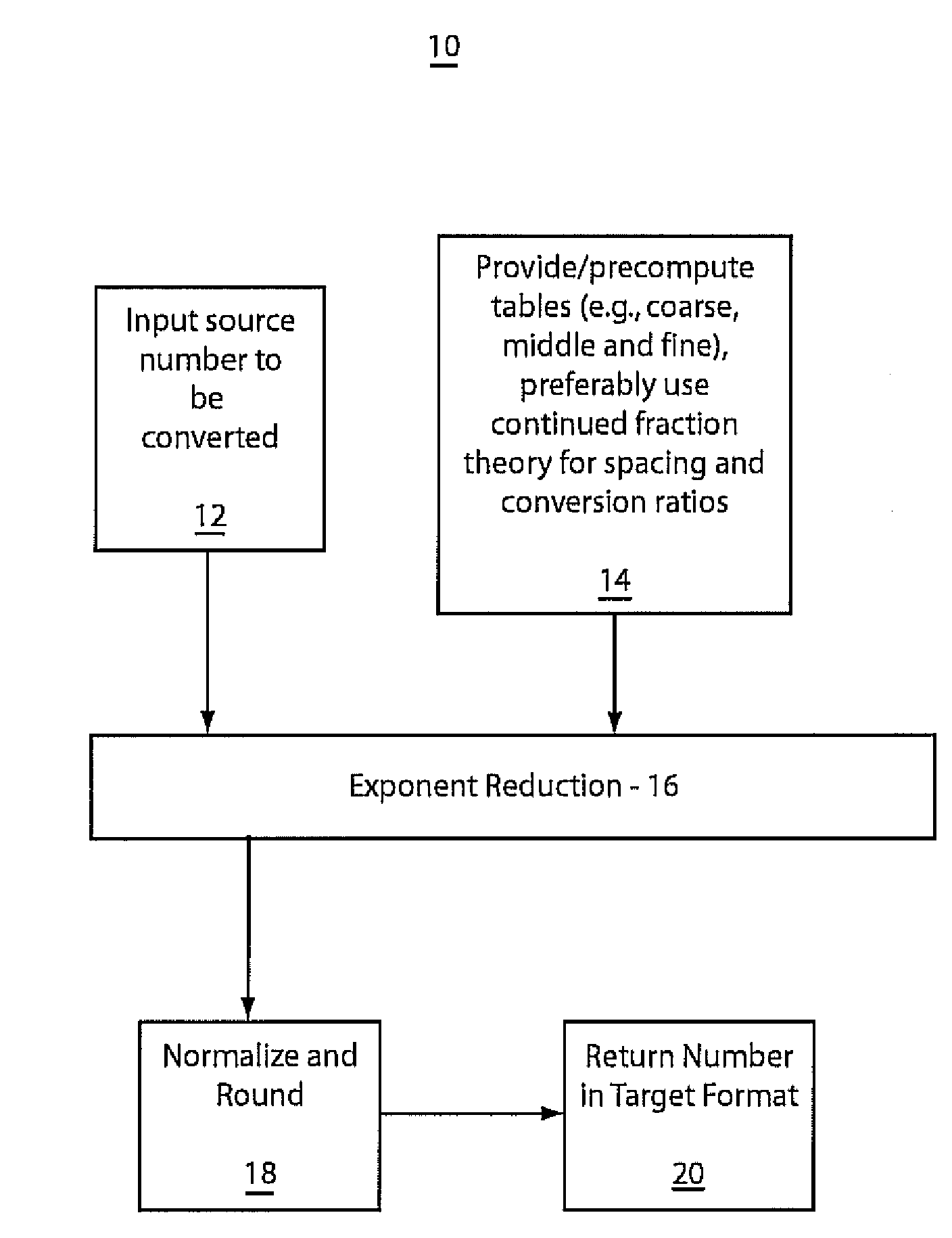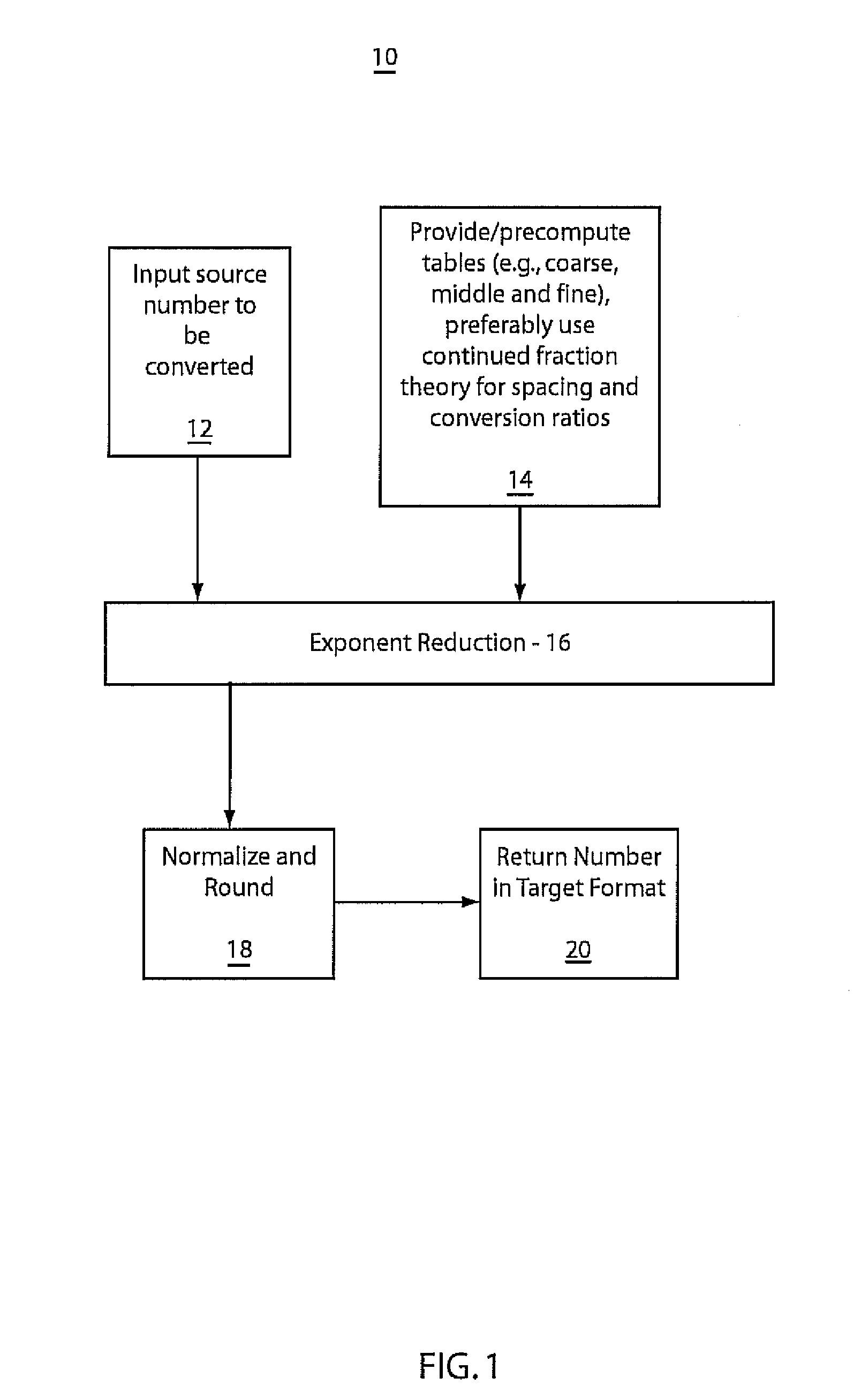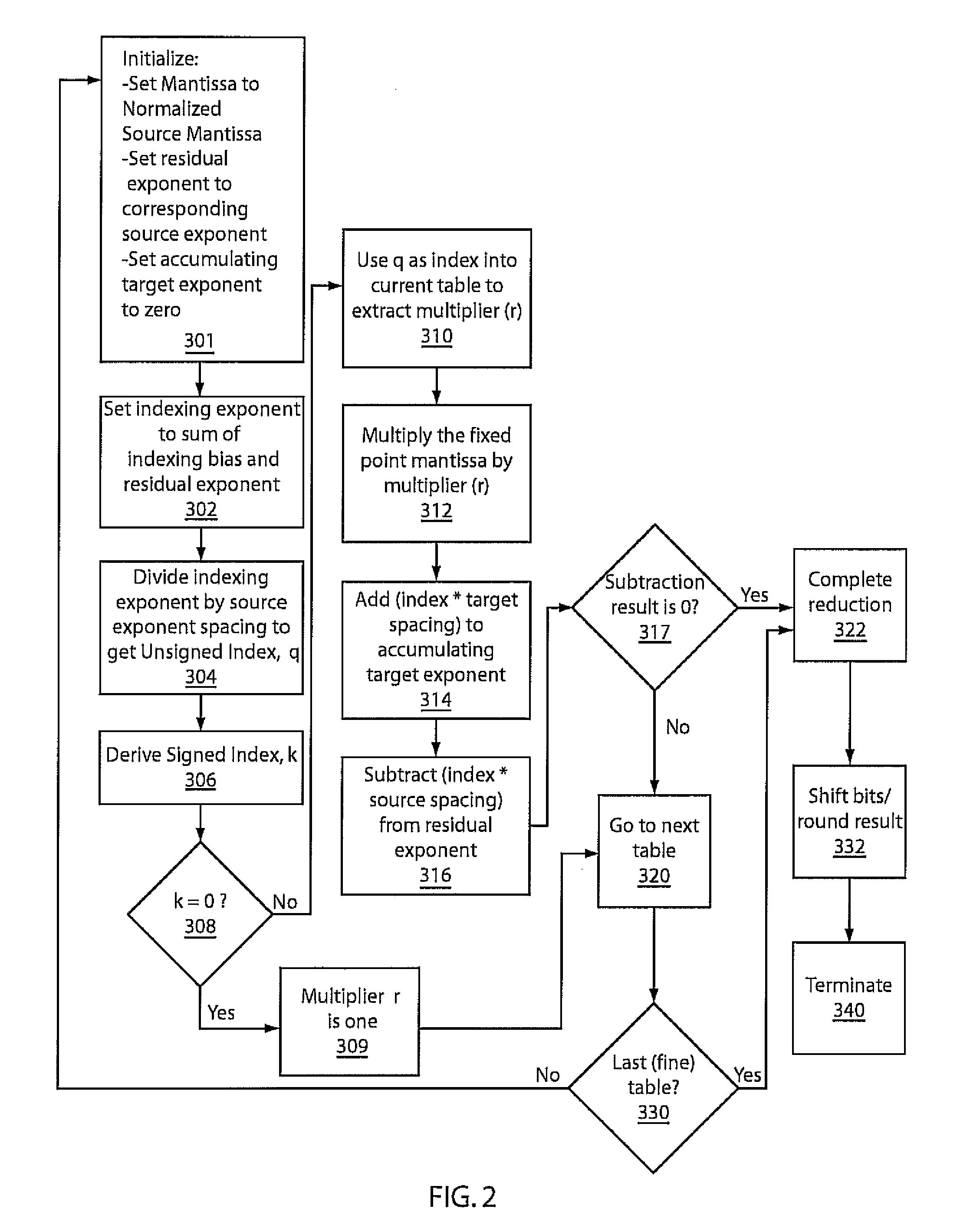Fast correctly-rounding floating-point conversion
a floating-point conversion and correctness technology, applied in the field of floating-point conversion, can solve the problems of large amount of scratch storage, large amount of fixed-point conversion, and prone to loss of precision, and achieve tightly bounded computational precision and minimize variation in mantissa's effective value
- Summary
- Abstract
- Description
- Claims
- Application Information
AI Technical Summary
Benefits of technology
Problems solved by technology
Method used
Image
Examples
Embodiment Construction
[0020]An improved system and method for fast floating-point conversion is presented. In particularly useful embodiments, conversion from binary-to-decimal and decimal-to-binary are contemplated. In accordance with one embodiment, needed intermediate precision can be precomputed and selected as a function of the desired result precision. Less intermediate scratch storage is needed in accordance with the present principles than for conventional methods, and a final rounding step provided herein is more efficient.
[0021]The embodiments described here are relevant to computational devices, computers, e-server platforms, and any other device or system which performs base conversion. In one implementation, the present principles may be applied to conversion instructions, and library routines for programming systems.
[0022]The present principles employ precomputed tight bounds on needed intermediate precision, and select multipliers using a Continued Fraction expansion of, e.g., log10(2) for...
PUM
 Login to View More
Login to View More Abstract
Description
Claims
Application Information
 Login to View More
Login to View More - R&D
- Intellectual Property
- Life Sciences
- Materials
- Tech Scout
- Unparalleled Data Quality
- Higher Quality Content
- 60% Fewer Hallucinations
Browse by: Latest US Patents, China's latest patents, Technical Efficacy Thesaurus, Application Domain, Technology Topic, Popular Technical Reports.
© 2025 PatSnap. All rights reserved.Legal|Privacy policy|Modern Slavery Act Transparency Statement|Sitemap|About US| Contact US: help@patsnap.com



